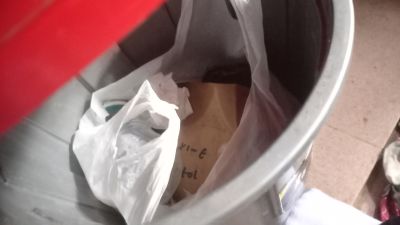how to manage residual waste
This is a Response to the Bagaimana cara kamu mengurangi sampah plastik untuk kelestarian bumi kita? wikithon
ratik plastik adalah sampah yang tamasuk kadalam golongan sampah residu.
yang mana sampah residu itu terisi atas sampah yang terdiri dari material yang kada tapakai lagi, baik gasan pengomposan atau gasan didaur ulang contoh sampah residu kaya, plastik detergen, bungkus shampoo, snack, plastik mie instan, sedotan, tisu, masker, popok, pembalut, kapas, dan styrofoam
pengelolaan sampah residu dimulai dengan proses fermentasi. sampah residu balumpuk abis itu dicampur dengan mikroorganisme lokal (MOL). abis tu tutup pakai campuran itu lalu diamakan sampai lima hari.
sampah plastik adalah sampah yang termasuk dalam golongan sampah residu.
dimana sampah residu terisi atas sampah yang terdiri dari material yang tidak dibutuhkan lagi, baik untuk pengomposan maupun untuk didaur ulang contoh sampah residu seperti, plastik detergen, bungkus shampoo, snack, plastik mie instan, sedotan, tisu, masker, popok, pembalut, kapas, dan styrofoam.
pengelolaan sampah residu dimulai dengan proses fermentasi. sampah residu ditumpuk lalu dicampur dengan mikroorganisme lokal (MOL). tutup campuran itu dan diamkan selama lima hari.plastic trash is a trash that is included in the residual trash category.
where residual trash is filled with trash consisting of materials that are no longer needed, either for composting or for recycling, examples of residual waste such as detergent plastic, shampoo packaging, snacks, instant noodle plastic, straws, tissues, masks, diapers, sanitary napkins, cotton, and styrofoam.
residual trash management begins with the fermentation process. residual waste is piled up and then mixed with local microorganisms (MOL). cover the mixture and let it sit for five days.- Affiliation
- Siswi SMAN 1 Kandangan
- Age
- 16-21


Enable comment auto-refresher